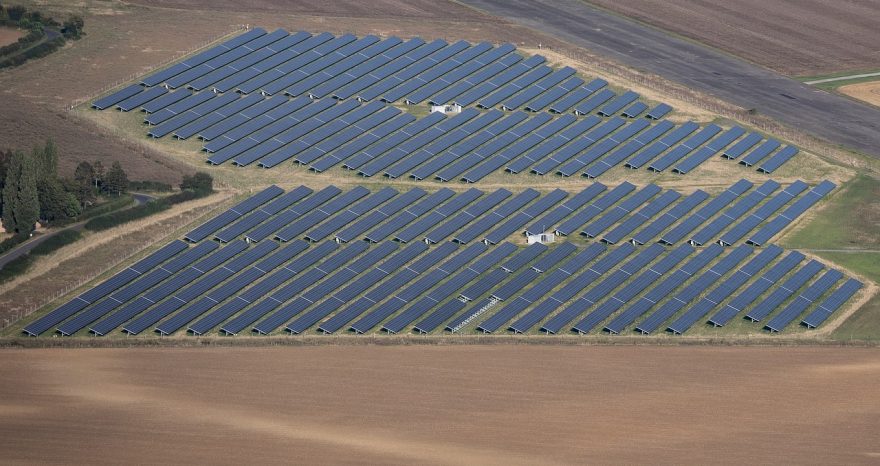Renewables and nuclear covered 80% of the global increase in electricity demand. Fossil fuels lag behind, with only gas showing growth

Extreme heat, rising industrial usage, booming electric vehicle sales, and the explosive growth of data centers and artificial intelligence have triggered a record surge in global electricity consumption. In 2024, global demand jumped by 4.3%, an increase of approximately 1,100 TWh, double the average annual growth seen over the last decade.
These insights come from the Global Energy Review 2025, released today by the International Energy Agency (IEA), offering a comprehensive look at 2024’s energy trends. The report focuses on three key developments:
- accelerated global energy demand led primarily by electricity,
- the expanding share of renewables in power generation,
- the continued decoupling of CO2 emissions from economic growth.
“Electricity use is growing fast, lifting overall energy demand enough to reverse years of decline in advanced economies,” said IEA Executive Director Fatih Birol.
“In 2024, demand increased for all major fuels and technologies, with renewables taking the lead, followed by natural gas. The rapid growth of solar, wind, nuclear, and electric vehicles is steadily weakening the link between economic growth and emissions,” Birol added.
Fossil fuels see mixed results: gas rises, coal and oil slow
While demand for all fossil fuels rose in 2024, the dynamics varied. Natural gas posted the strongest growth, rising 2.7% (about 115 billion cubic meters), well above the 10-year average of 75 bcm per year.
Growth differed significantly by region:
- China led the way with a 7% increase (30 bcm), followed by other emerging Asian economies.
- In the United States, gas demand rose by around 2% (20 bcm).
- The European Union saw a modest uptick, primarily in industrial use.
Global coal demand grew by 1%, still increasing, but at half the pace of 2023. This rise was largely driven by higher electricity use during extreme heatwaves. China and India alone accounted for over 90% of the global increase of 65 million tonnes of coal equivalent (Mtce), with China reaching a record-high 58% share of global coal consumption.
Oil demand slowed sharply to 0.8% in 2024, down from 1.9% in 2023, matching IEA projections. For the first time in history, oil’s share in total energy demand fell below 30%, half a century after peaking at 46%.
In road transport, oil demand declined slightly, with drops in China (-1.8%) and advanced economies (-0.3%), partially offset by increases in aviation and petrochemical sectors.
2024’s global electricity consumption boom: key drivers
The standout trend of 2024 was the exceptional 4.3% increase in global electricity demand—almost 1,100 TWh, twice the previous decade’s average and more than Japan’s annual power use. It marked the highest annual rise outside of post-recession recovery periods.
What fueled this unprecedented surge?
The IEA report identifies three main drivers:
- Extreme temperatures led to soaring cooling demand in buildings, accounting for nearly 60% of the total increase in global electricity consumption.
- Data center and AI growth pushed installed capacity up by 20% (around 15 GW), mostly in the US and China.
- Transport electrification gained speed, with electric vehicle sales up over 25%, surpassing 17 million units and representing more than 20% of all car sales. This trend directly contributed to lower oil demand in road transport.
Renewables and nuclear met most of 2024’s power demand growth
Low-emission sources, led by renewables and supported by nuclear, covered 80% of the increase in global electricity generation in 2024. Together, they accounted for 40% of total electricity production, a historic first, with renewables alone delivering 32%.
New renewable capacity hit a record high for the 22nd consecutive year, adding roughly 700 GW, nearly 80% of which came from solar. Solar and wind generation grew by a record 670 TWh, compared to 170 TWh from gas and 90 TWh from coal.
Nuclear also made a comeback in 2024, with over 7 GW of new capacity commissioned, 33% more than in 2023 and the fifth-highest annual addition in three decades. Nuclear generation rose by 100 TWh, matching its largest annual gain this century outside of the post-COVID rebound. All new nuclear projects came from China and Russia, with new construction starts up 50%.
CO₂ emissions: decoupling holds firm
Despite growth across all fossil fuels, the IEA notes a promising trend, energy-related CO₂ emissions continued to decouple from global economic growth. The global economy expanded over 3% in 2024, yet energy-related emissions rose just 0.8%, reaching 37.8 billion tons (GtCO₂).
The increase, about 300 million tons, was strongly influenced by extreme weather. The IEA estimates that if 2024 had experienced the same weather patterns as 2023 (already the second-hottest year on record), half of the rise in emissions could have been avoided.
Emissions in advanced economies fell by 1.1%, down to 10.9 GtCO₂, levels last seen 50 years ago when their combined GDP was one-third of today’s value. Most of the 2024 emissions growth came from emerging and developing economies outside China. Although China’s emissions growth slowed, its per capita emissions are now 16% higher than those of advanced economies and nearly double the global average.
Download Global Energy Review dell’IEA.












